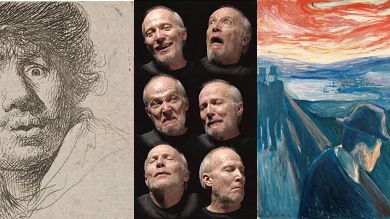
Press release -
Nationalmuseum gets passionate this spring
This spring’s big exhibition at Nationalmuseum, Passions, is all about emotion in art. Starting on 8 March, over 100 works depicting emotions such as sorrow, fear and joy will go on show. The artists represented include Dürer, Munch, Rembrandt, Tony Oursler, Rineke Dijkstra and Bill Viola.
Passions – Five Centuries of Art and the Emotions, the major exhibition at Nationalmuseum this spring, will examine how the emotions are interpreted and portrayed in art. Body language has been a source of fascination through the ages, right up to the present day. Self-help books and courses offer guidance on interpreting the secret language of the human body and on appropriate body language for various situations. Artists have been interested in the emotions, and how they are expressed, since ancient times, depicting facial expressions, gestures and body language in their works to convey sorrow, suffering, fear, melancholy, tenderness and joy.
The exhibition will also encourage visitors to reflect on their own emotions. Do we always show our feelings, or do we hide them? How do we show what we feel? Are we laughing with or at someone? Mirrors on the gallery walls will confront exhibition visitors with their own and their fellow visitors’ reactions to the artworks and the emotions conveyed.
The exhibition will feature over 100 works from the Renaissance to the present day, some from Nationalmuseum’s own collections, and others obtained on loan. The works will be a mix of painting, sculpture, video, drawing and graphic art, by artists such as Dürer, Munch, Rembrandt, Tony Oursler, Rineke Dijkstra and Bill Viola. The exhibition will also include a collection of illustrated books on physiognomy from the Hagströmer Library at Karolinska Institutet. A series of lectures, concerts and drama productions will be presented to tie in with the exhibition.
The exhibition runs from 8 March to 12 August 2012.
Catalogue
A fully illustrated exhibition catalogue will be published, containing articles by experts in art and music, history, the history of science and ideas, philosophy, and psychiatry.
Further information
Karin Sidén, exhibition curator, ksn@nationalmuseum.se, +46 8 5195 4301
Hanna Tottmar, press officer, htr@nationalmuseum.se, +46 8 5195 4390
Press images
www.nationalmuseum.se/pressroom
Captions
Rembrandt, Self-portrait; Bill Viola, Six Heads; Edvard Munch, Despair
Categories

